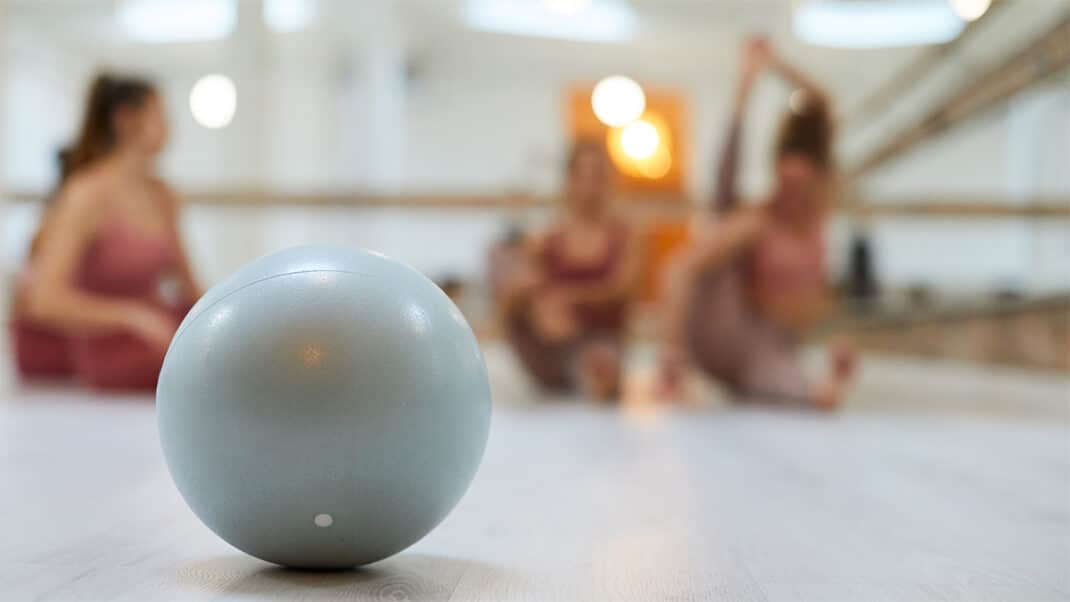Rev Up Your Own Workout
Got the exercise blahs? Discover how to shake up your fitness program.
You’re constantly fine-tuning and progressing your clients’ workouts, but are you so focused on helping others that you sometimes forget to keep your own workouts exciting? Get inspired by what your colleagues are doing to modify their exercise programs.
Competing in a sport or participating in several sports throughout the year can help you stay motivated.
Base Workouts Around Seasonal Sports. Kathy Creighton-Conant of Brookfield, Connecticut, varies her cardiovascular training around seasonal sports. “My fail-safe exercise is running—anytime, anywhere, but hockey in the winter and slalom skiing during the summer, among other things, give me a good variety each year.”
Train for Organized Events. Wendy Malin of Buffalo Grove, Illinois, participates in local sprint distance triathlons. “I set goals for myself and have enjoyed a tremendous amount of personal, physical and emotional strength from participating in these events,” she says. “Training for three events is varied enough to keep me interested and is separate from some of my group fitness classes. I also enjoy my new group of friends.”
Jane Hawksley Ogle of Plaza Fitness at Stuyvesant Plaza in Albany, New York, also maintains interest in exercise through running. “I’ve been an avid runner for many years, and I completed my first marathon in 1999,” she says. “About 3 years ago, I caught a bug to train for more speed but was bored silly with the speed workouts I had put together. So I asked my running buddies and found a USA Track & Field–affiliated club, Team Utopia. The speed work practices gave me just the mental and physical boost I needed to make progress and enjoy training again. What a treat it has been to follow someone else’s great advice! My marathon personal record went from 4 hours down to 3 hours 40 minutes, and I’ve made some great friends and professional contacts on the team.”
Some fitness professionals find that periodization principles help keep their workouts fresh. “I train for ultra-endurance events (trail running), and my season is mid spring to early fall,” says Pam Pedlow, MHK, MES, CSCS, strength and conditioning specialist at ARC Sport Camp Training Systems in North Vancouver, British Columbia. “Years ago, I’d end a season in peak form, then try to advance my training from that point,” she explains. “It led to burnout, staleness and poor performance in the ensuing season. Now I periodize my strength. I accept that recovery is part of getting stronger, rather than thinking of it as detraining. First month postseason, I work on balance, basic core [work] and body weight “core-dinated” strength—that is, strength that integrates the upper body, lower body and core in complex movement patterns. This time allows me to regenerate as well as develop new exercises for my clients and me. Next phase, I begin to rebuild strength. I do more complicated movement patterns, progressing back up to the multidimensional, power-oriented workouts just prior to season. This has made an amazing difference in both my performance and my strength.”
Phillip Bazzini, CSCS, of Exercise and Sports Training Programs in Englewood Cliffs, New Jersey, stays motivated by using “theme training,” a concept he first heard about from consultant coach and functional sports training expert Vern Gambetta. “It’s similar to periodization but less formal,” he says. “Theme training emphasizes certain aspects of fitness for a given, but unspecified, period. For example, currently I am trying to increase my ability in the pull-up exercise. I will do no other major pull/lats exercise except the pull-up until I am satisfied that my pull-ups are going strong. At first, I recorded how many pull-ups I could do in one effort. Then, I took that number, cut it in half and began performing 3–4 sets of this number, adding one rep per set every 2–3 weeks.”
Other fitness pros prevent their workouts from becoming stale—and sharpen their skills at the same time—by seeking out different exercises.
“I read, read, read—and keep a big repertoire of exercises so I can constantly vary my workouts,” says Suzanna Price, ACSM-certified health/fitness instructor and AFAA-certified group fitness instructor in Denver. “I love Strength Training Anatomy (Human Kinetics 2005) and Women’s Strength Training Anatomy (Human Kinetics 2003), both by Frédéric Delavier. Another [wonderful] resource has been ExRx.net. The public library has also been a great place for ideas. I check out videos, try the workouts and then, if I like them, watch them again and take notes.”
Varying their professional commitments helps other exercise specialists stay excited about exercise.
Rotate Classes. “The worst thing you can do is to teach the same class, same time slot, same students month after month and year after year,” says Linda Freeman, IDEA presenter and author, IDEA Master Personal Fitness Trainer and owner of Guru Fitness in Green Bay, Wisconsin. “I change my teaching schedule on a seasonal basis to find renewed energy and passion! I also schedule my own time to strength train and adjust that with the different seasons. Things I might change: which muscles groups I work together; fewer, heavier reps vs. a higher number of lighter reps; the types of exercises I do for each muscle group; focusing on eccentric training, etc.”
Teach Several Types of Classes. How does Lisa Garrity, education specialist of Fit-X San Diego, avoid the stale workout syndrome? “I keep group fitness interesting by teaching a wide variety of classes—water aerobics, step, double step, indoor cycling, Rep Reebok, mat Pilates, cardio kickbox, yoga and the ever-popular ‘fusion’ classes that are a little bit of everything all in one package,” she says.
Some fitness pros are finding that using a personal trainer themselves benefits their workouts. Here are some different ways pros have used trainers.
Train for a Short Period of Time. “I hired a personal trainer twice to see what it was like to be a client,” says Joan Varacalli of Toronto. “With one I [trained for about 2 months], and I was surprised at the great results. I built more muscle than I usually do on my own. I pushed more weight and worked harder having the trainer, plus it was great to have someone to spot for me and design a program that I could just follow.”
Tracy Masson, a certified personal trainer at Fitness World in Coquitlam, British Columbia, hired a personal trainer one summer to keep her motivated and to learn new techniques. “My trainer showed me a full-body program with free weights using athletic training techniques,” she says. “He taught me a great core ball routine and some prehabilitation moves for my hips because my left hip gives me trouble sometimes from an old injury. I learned some fabulous training techniques and have passed them on to some of my clients.”
Train Every So Often. For strength training, Kathy Creighton-Conant of Brookfield, Connecticut, gets occasional outside help. “Signing up at the local Powerhouse Gym for 1–3 months every 1–2 years keeps me psyched up and motivated,” she says. “I usually hire the gym trainer for several one-on-one sessions and then follow his lead on my own. It is refreshing to get on different equipment and brainstorm with a peer regarding the latest training techniques and methods, and it’s always interesting to observe the gym clientele.”
Train on an Ongoing Basis. Tessa Coker of Mammoth Lakes, California, works with a Pilates personal trainer whom she also considers a mentor. “Even though I teach Pilates myself, I never stop learning new things about my body as my awareness develops. At 52 years old, my body is suffering from various old injuries, surgeries, limitations and resultant misalignments.”
Train to Become a Better Trainer. Stephanie Simpson from Columbus, Ohio, is NASM-certified in personal training and Optimum Performance Training™ and has worked as a personal trainer for 2 years. “I continue to work out with a trainer once a week to stay on track with my personal fitness as well as to learn from my peer,” she says. “I’ve learned a lot attending seminars and through training manuals. However, working with another trainer has taught me more than I ever imagined possible. Every trainer has a different style and, with all the certifications out there, it’s good to experience the various types of training that go on in a club. My trainer has helped me set expectations and standards for my client base. I feel I’m a better trainer and more creative in my programming because of my sessions with him.”






